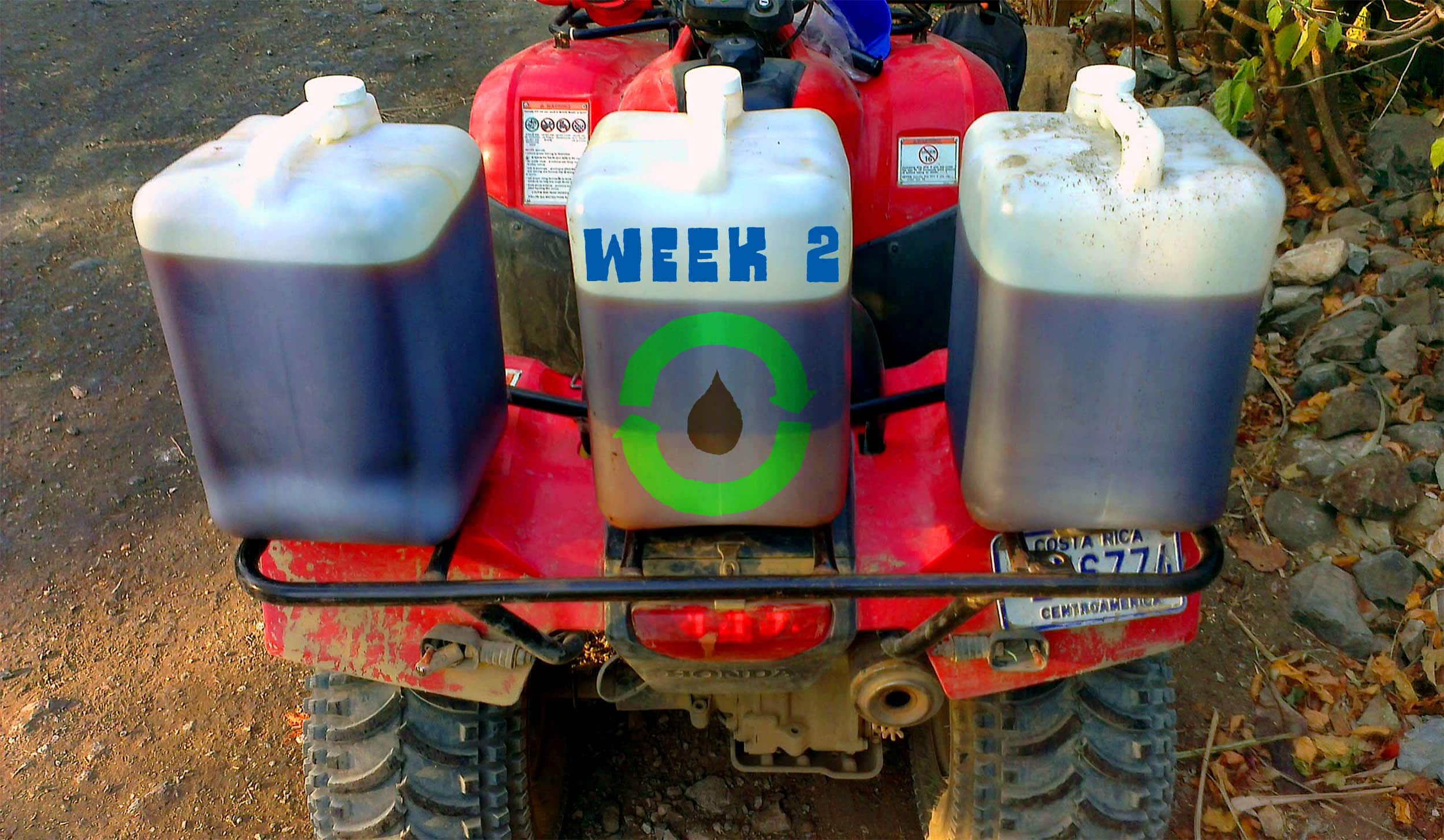Our second week was extremely productive! Ryan started to feel a lot better on Monday thanks to the antibiotics and we organized a work schedule with Tyler’s gardeners, Rigo and Ivan. From Tuesday to Friday, we would start working at 7am and finish at 5 or 5:30pm. Ryan and I have been able to surf at sunset everyday, which is perfect for washing off all the dirt and grime. See our progress throughout this past week by scrolling through the photos. In case you missed the update from Week 1, click here. We picked up more construction materials on Monday and laid out our plans for the week. This is what the project site looked like before we began construction: 
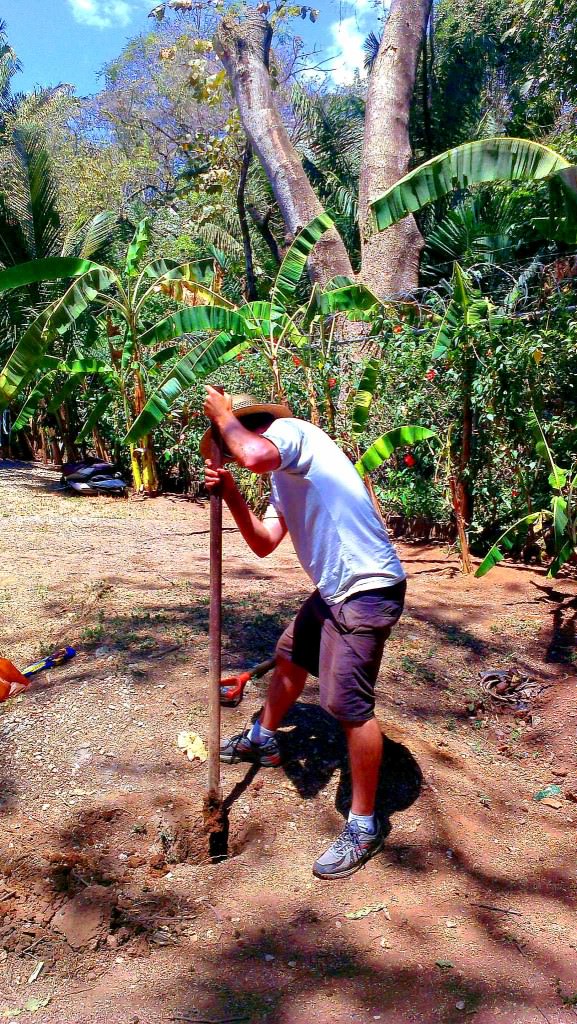
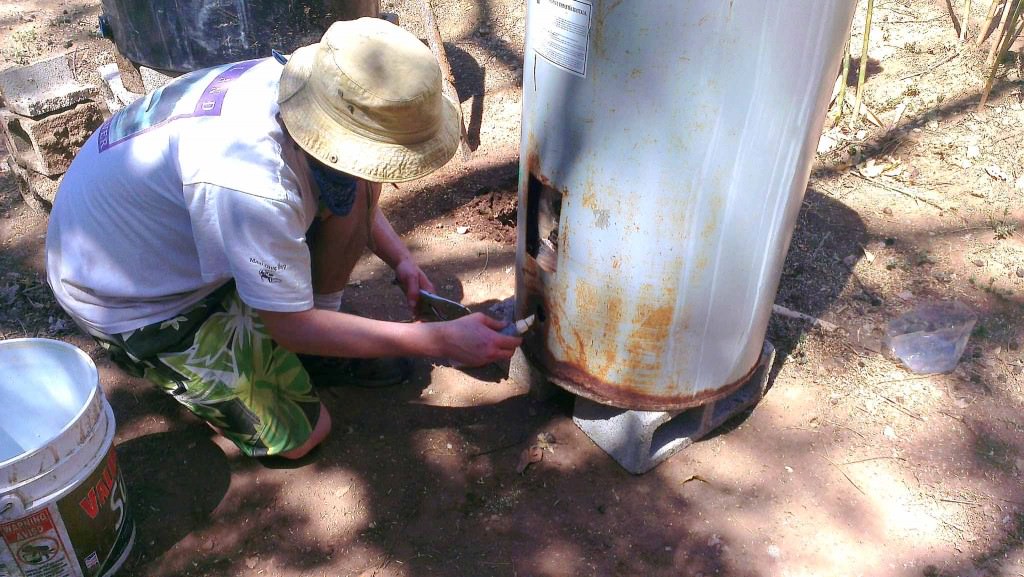
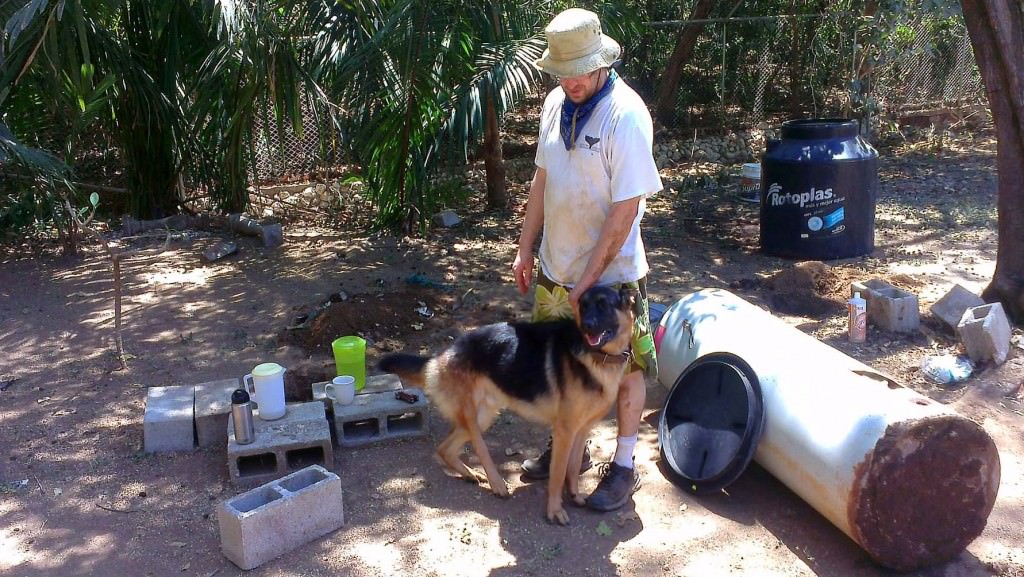
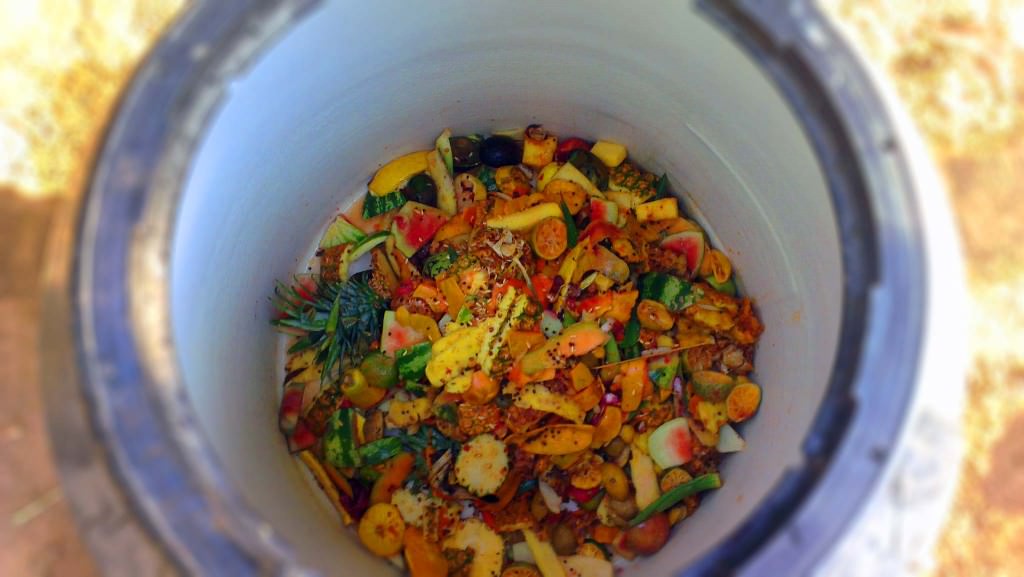
Wednesday, Rigo brought all the teak we needed for the shelter, which is sustainably harvested from a local plantation in Nosara (apparently teak grows like a weed here – 2 out of the 3 species of teak are endangered, but not the one we are using). First we had to de-bark all the teak, which is no joke – you smack the bark until it becomes loose and then pull it off. My hands were done at the end of the day:
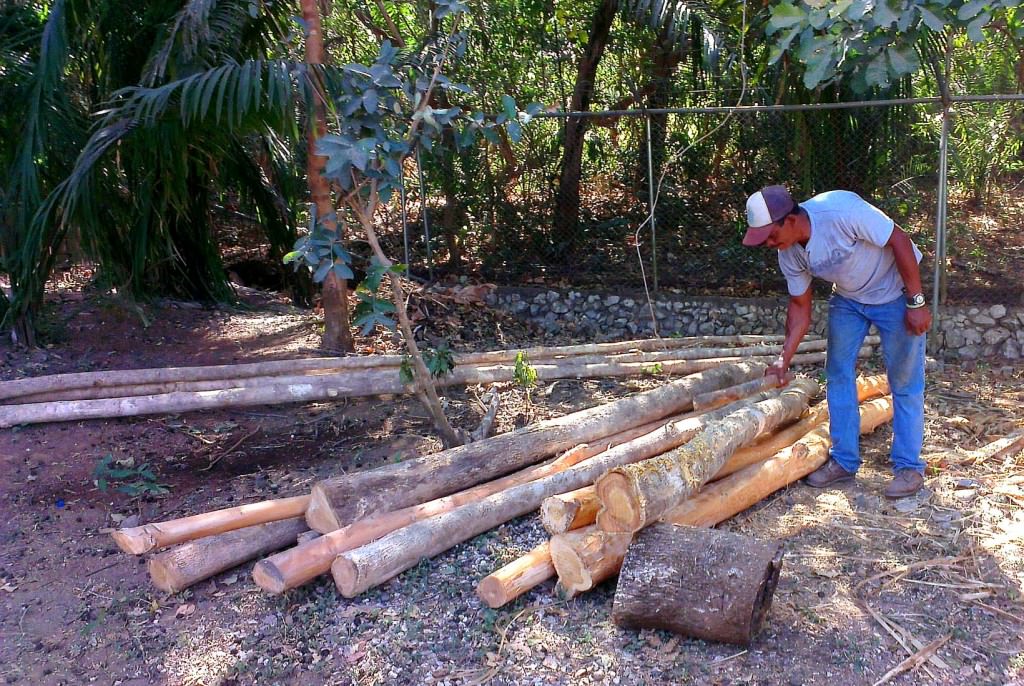

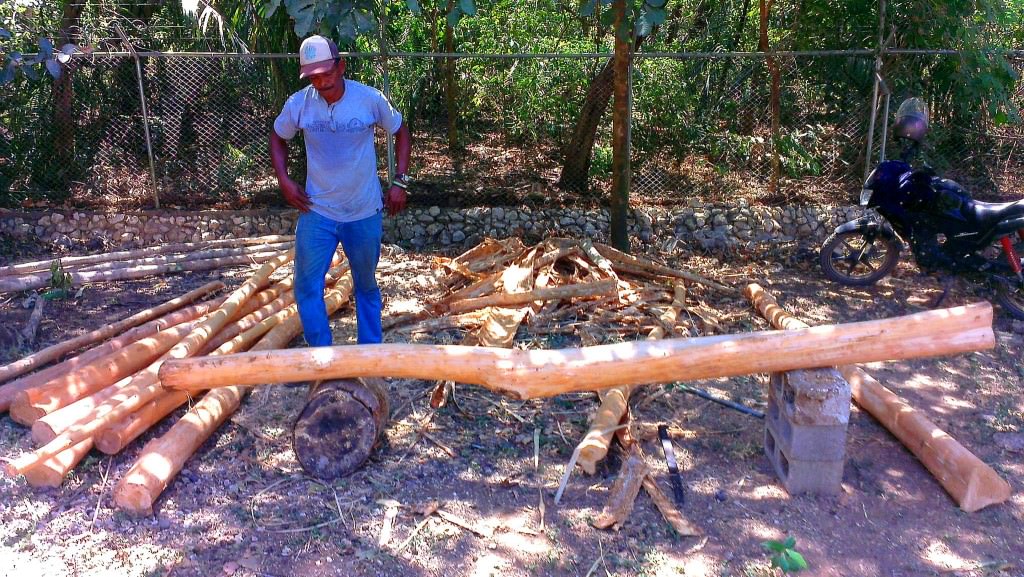

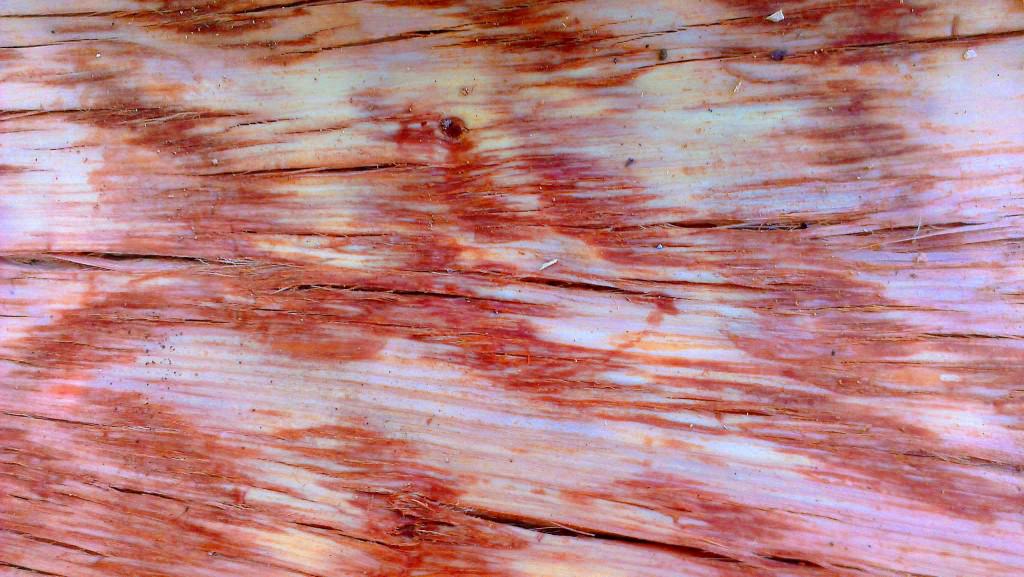
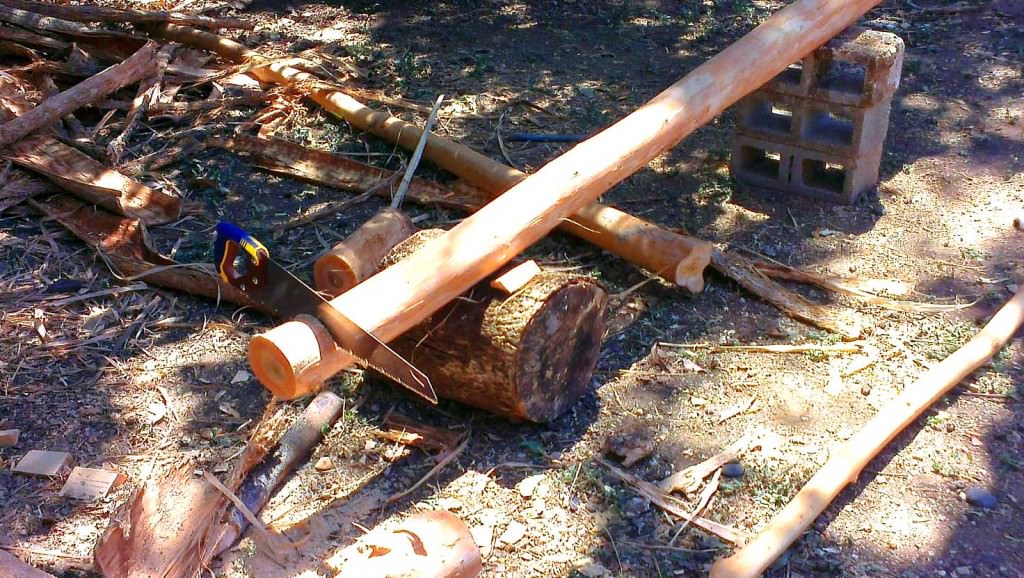
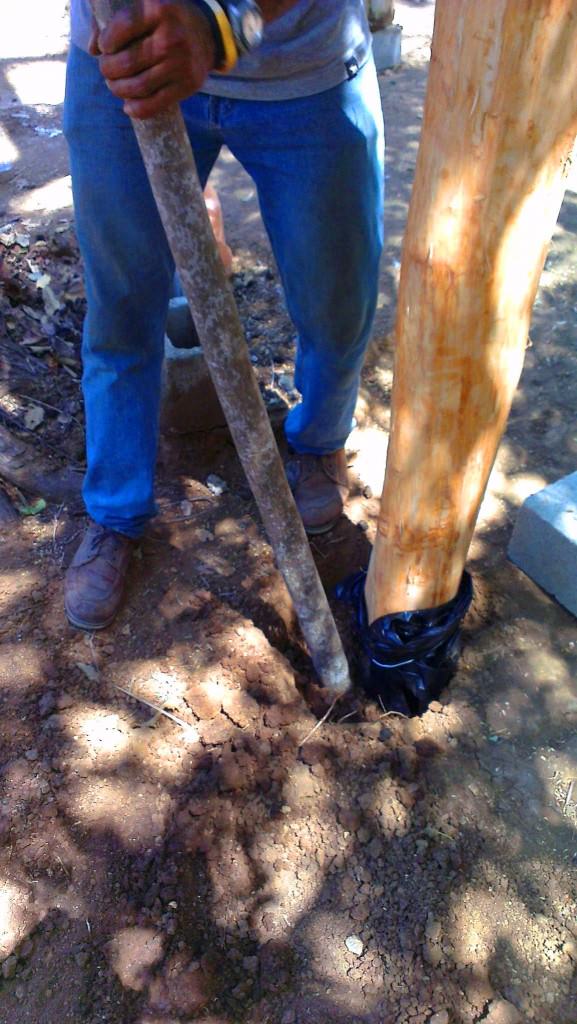

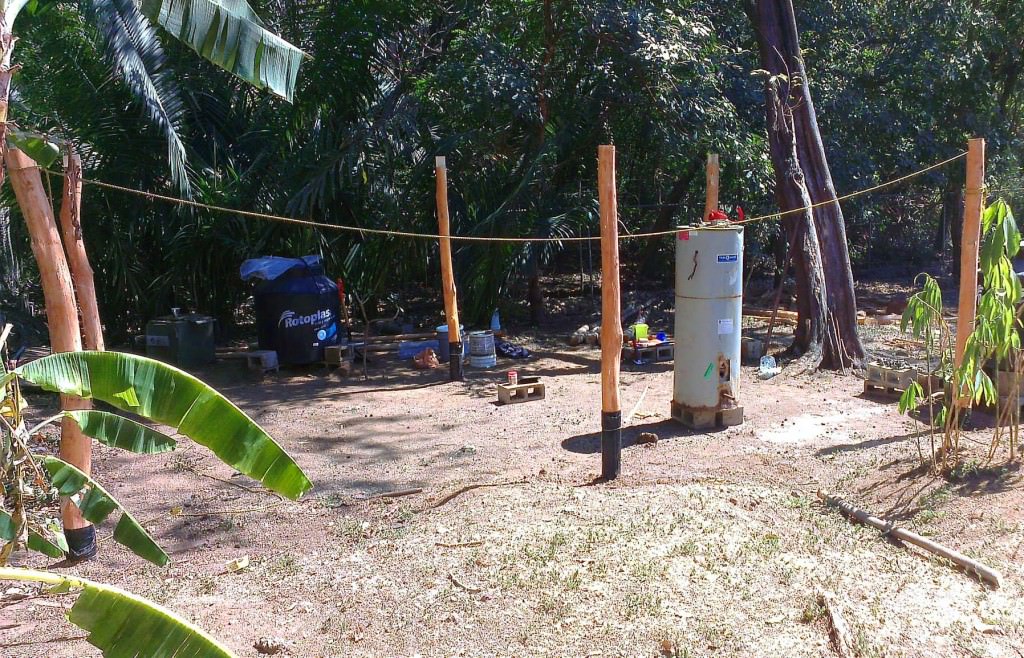
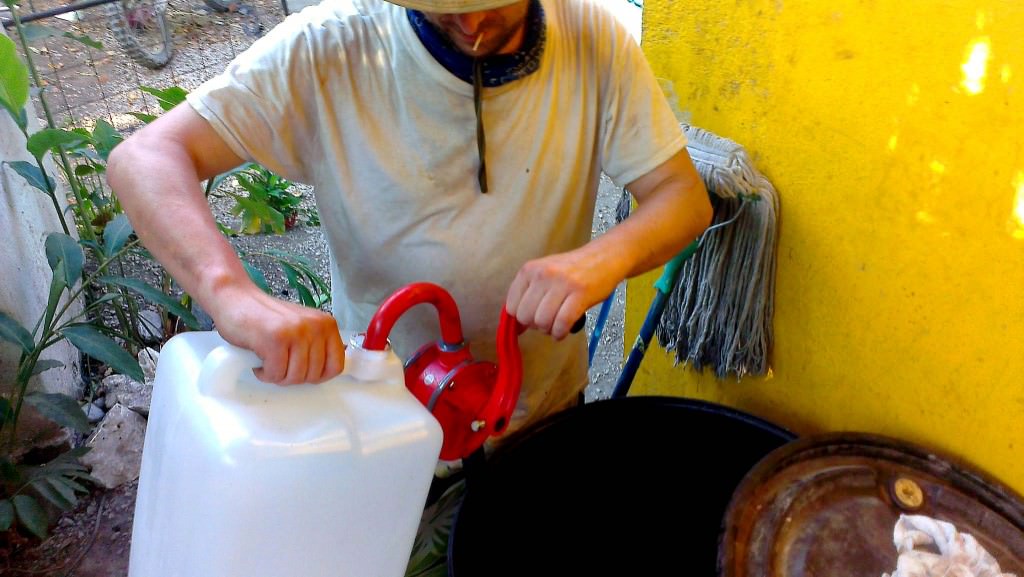
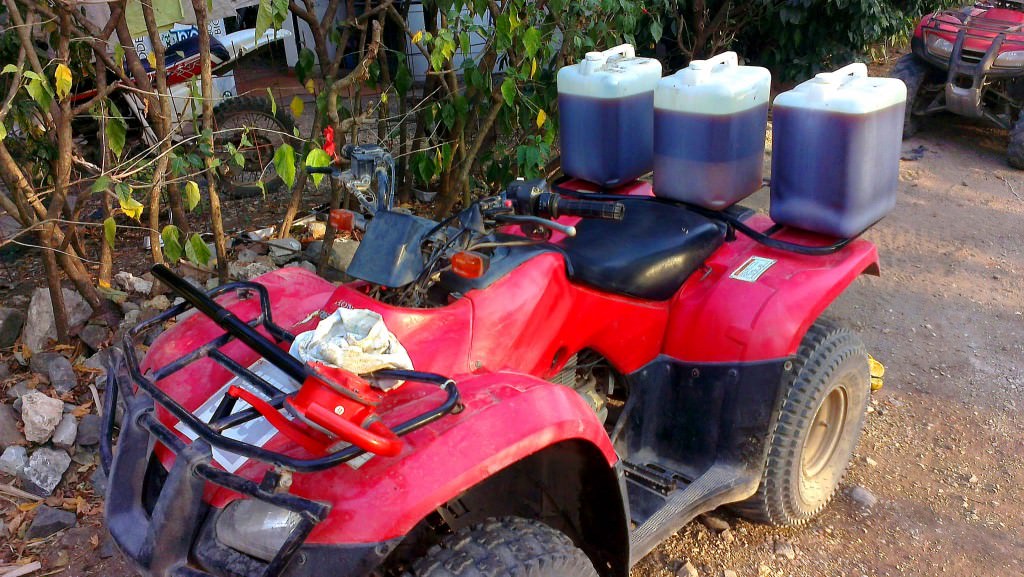
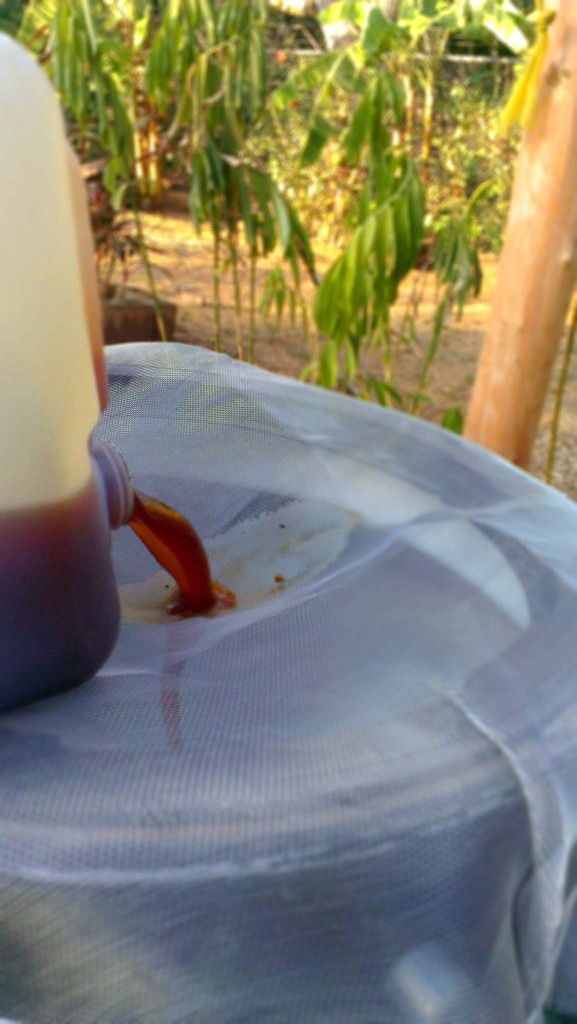
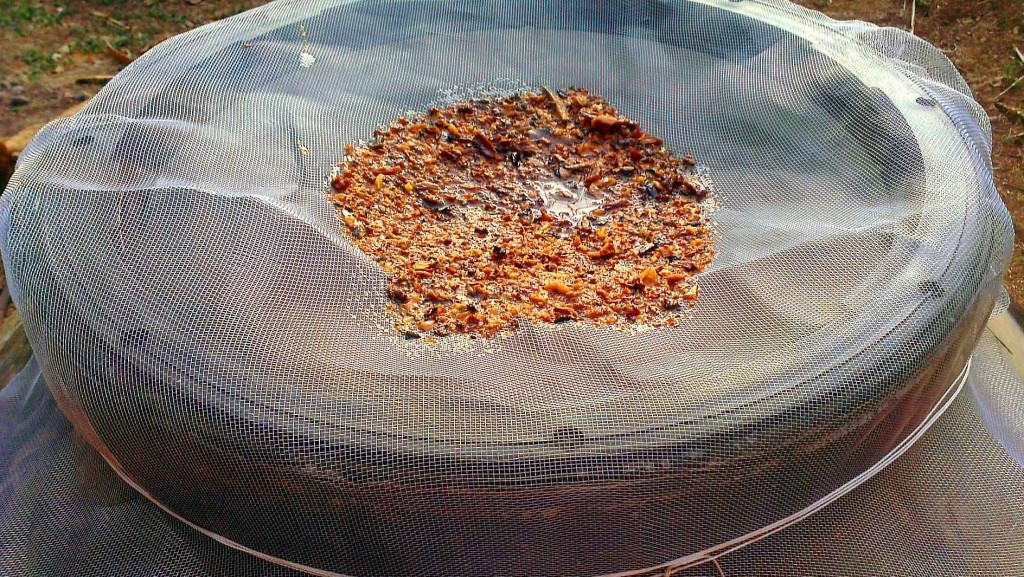
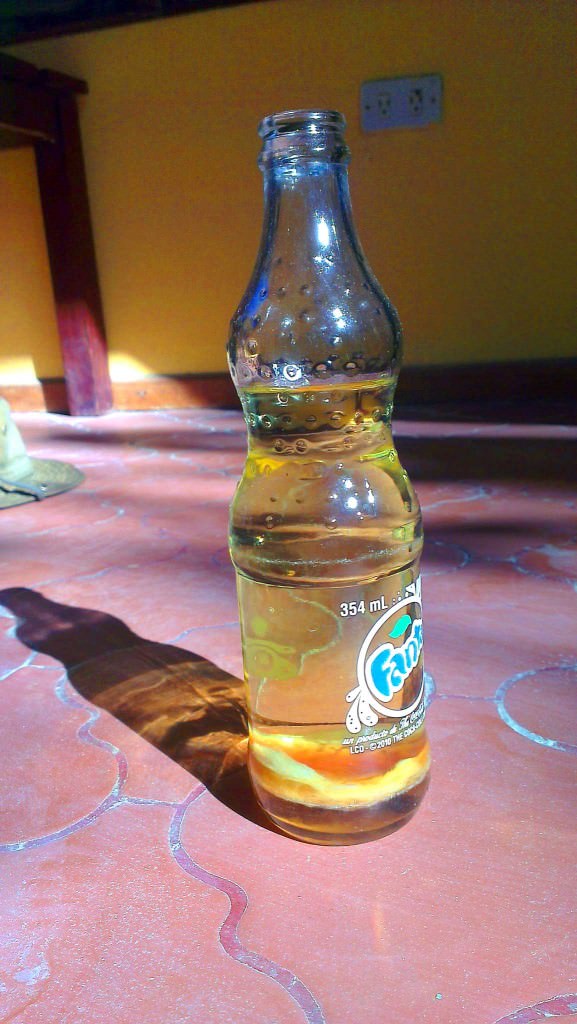
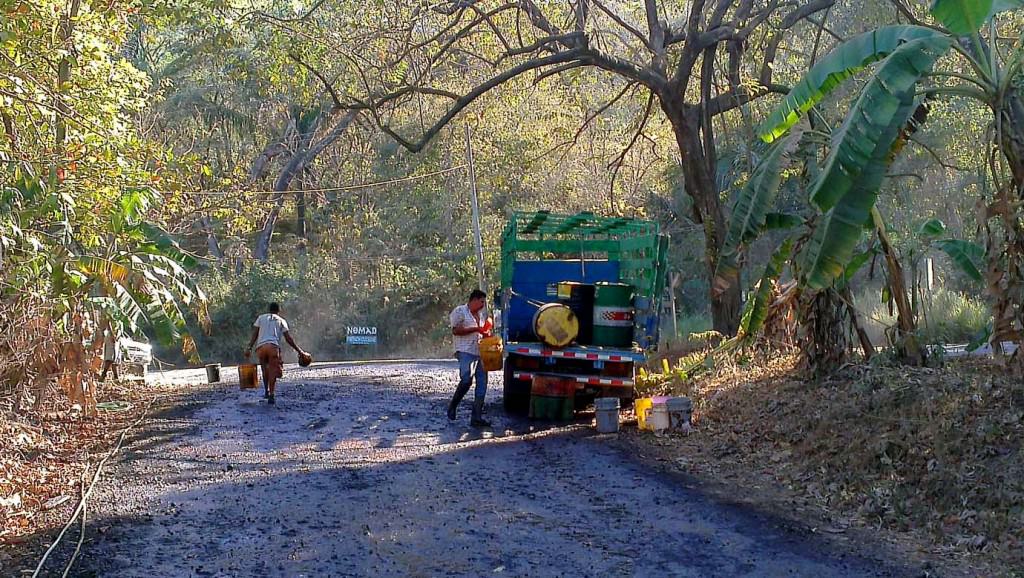
Thursday, we began building the framework for the roof of the shelter and Ryan continued to prepare the water heater for the “greasercycle” pump.
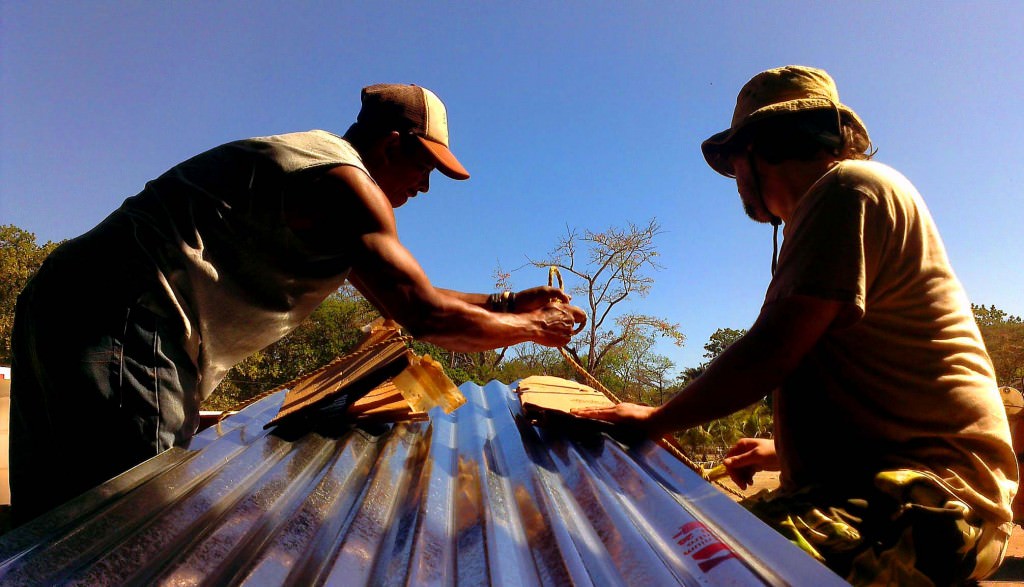
We were hoping to use the old tin sheets that make up the fence separating the Casa Tucan from this hideous apartment complex that has been sitting unfinished for six years, but the tin is rusty and littered with holes. The group who purchased the Casa Tucan also purchased this space and is tearing down the complex completely (see image below): 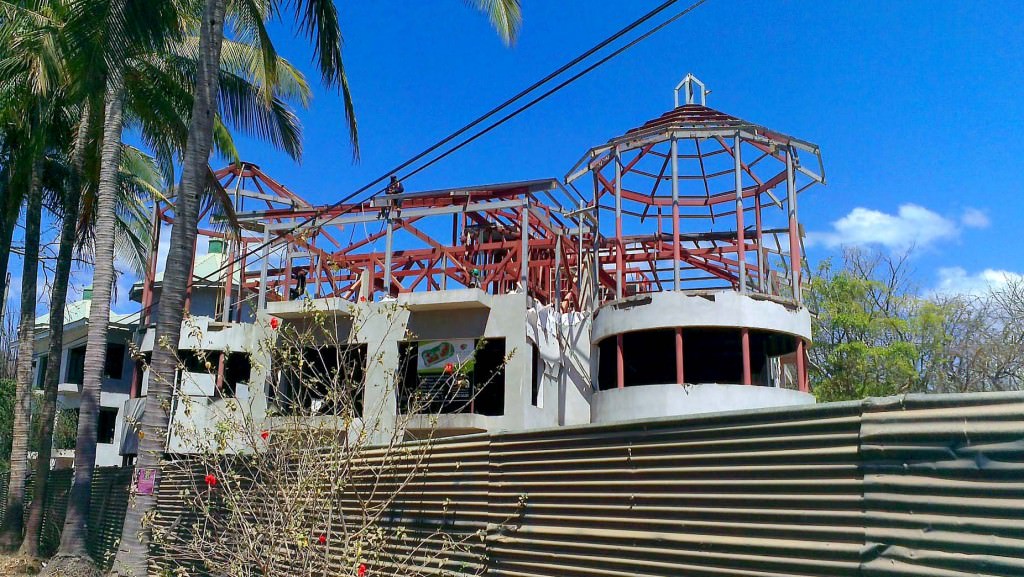
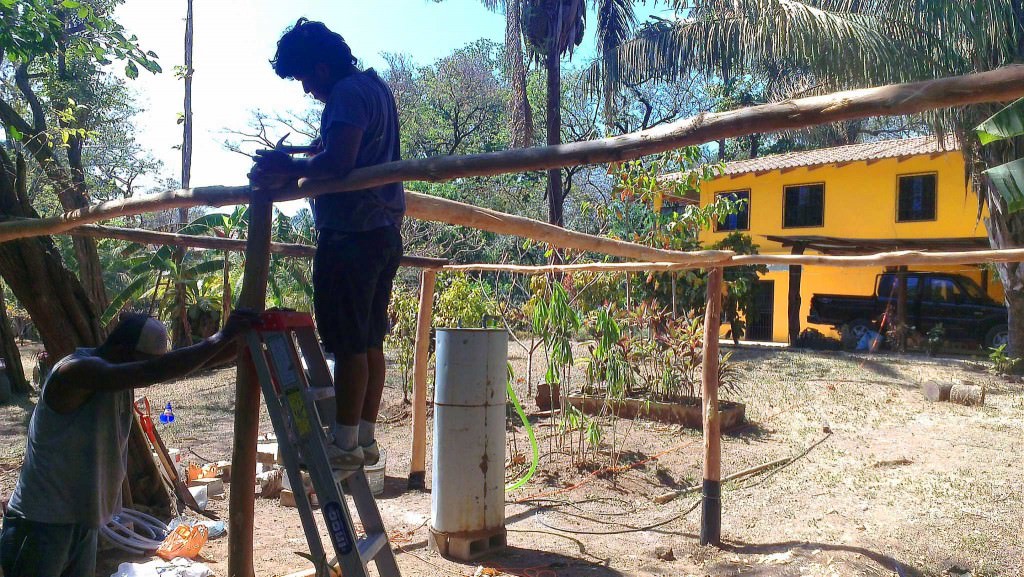
We finished the structure for the roof on Friday and we will install the tin sheets on Monday. 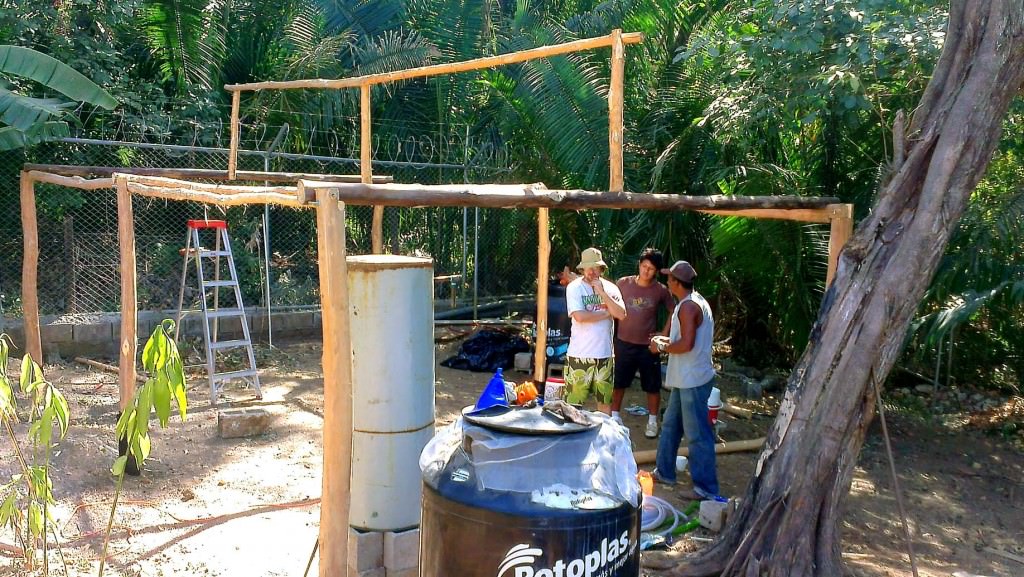
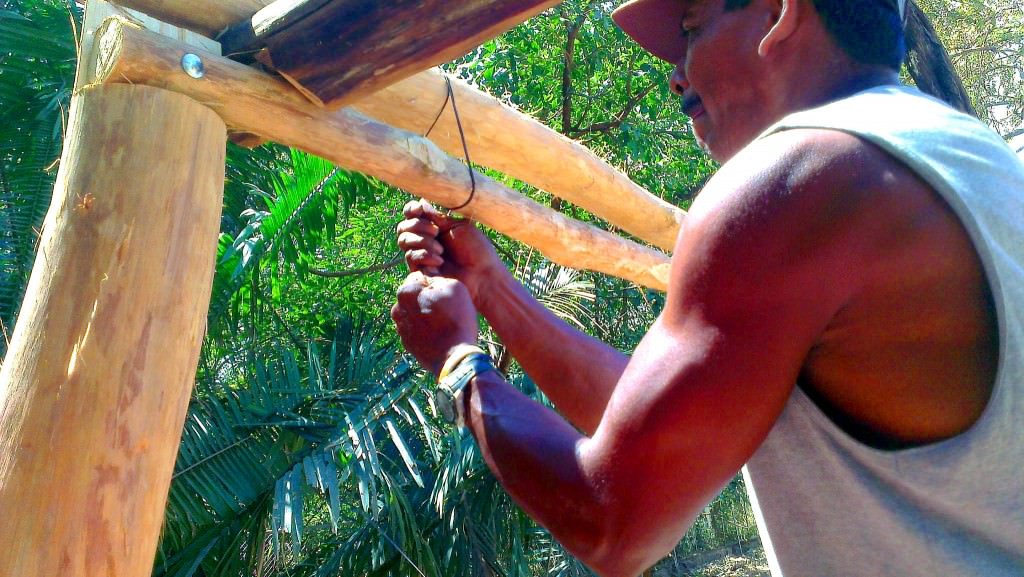
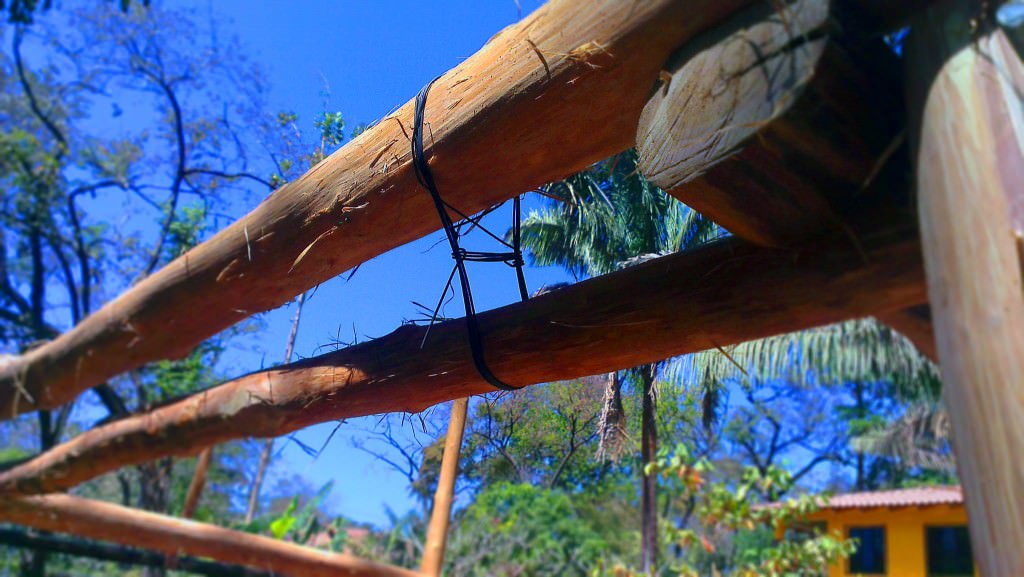
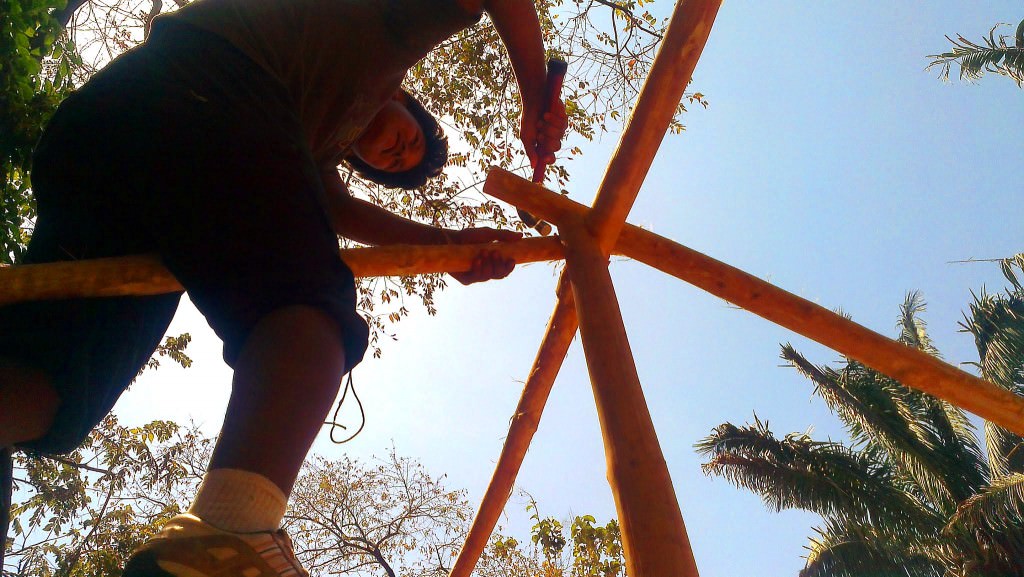
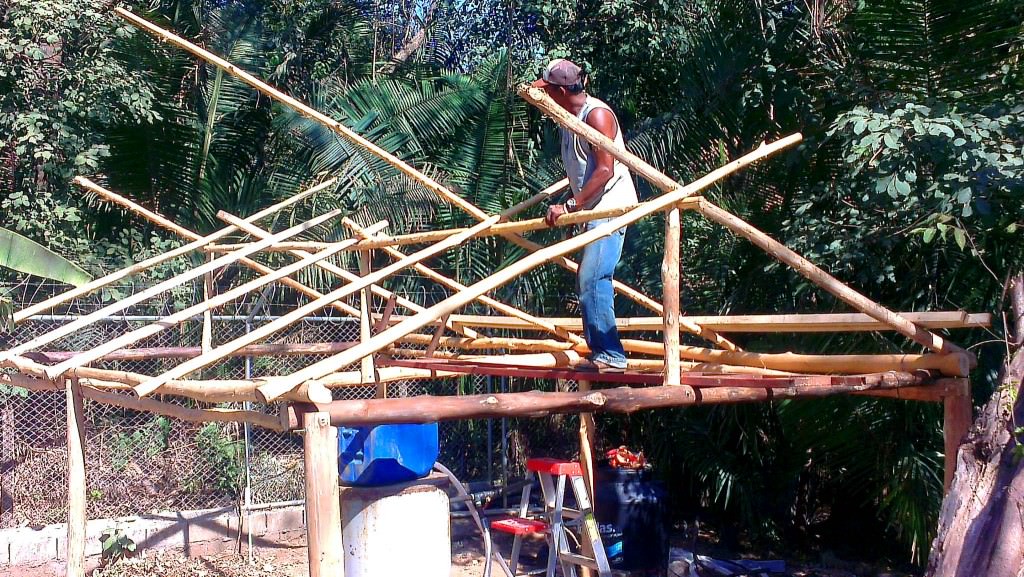

Additionally, we are testing a smaller, cheaper and easier to use pump (see image below) than the traditional 1.5 horsepower electric water pump ($90) that you connect to a bicycle to mix the chemicals and grease to make biodiesel. Ryan installed a drill chuck on to a heavy duty drill bit pump (Harbor Freight – $15) that we can hook up to Tyler’s beach cruiser (we’ll test our new design Monday or Tuesday).

See what other cool things people are doing with bicycle pumps all over the world (click closed captioning “CC” for subtitles):
I had sent out an email earlier in the week to all the restaurants in Nosara explaining our project and that we would like to start collecting their grease and fruit scraps. Beach Dog Cafe and Cafe de Paris have joined the program and it looks like we’ll have Rancho Tico as well. On Saturday, I went to collect grease and fruit from Beach Dog Cafe and the owner, Mike, was really helpful. Fabian from Cafe de Paris, will notify us when he has more grease because he currently has less than a liter. Thanks for the support! The methanol and lye arrived on Saturday as well. After collecting all the fruit from the past week, we will be ready to start ethanol fermentation on Monday. Once the 120 gallon drum is half full with fruit, we fill it with water to 3/4 full and add yeast – let it sit for two weeks and then we’ll have ethanol! We should have the roof finished tomorrow as well as the other parts to the biodiesel system… we will be ready for production by mid-week! Ryan and I are presenting at Nosara Sostenible’s weekly meeting tomorrow to talk about our project and hopefully rally more support from the local businesses who are passionate about sustainability. See you next week!
Jump to “Week 3.”


